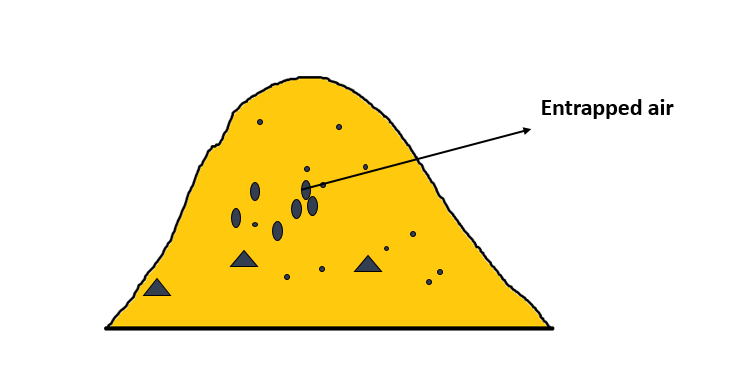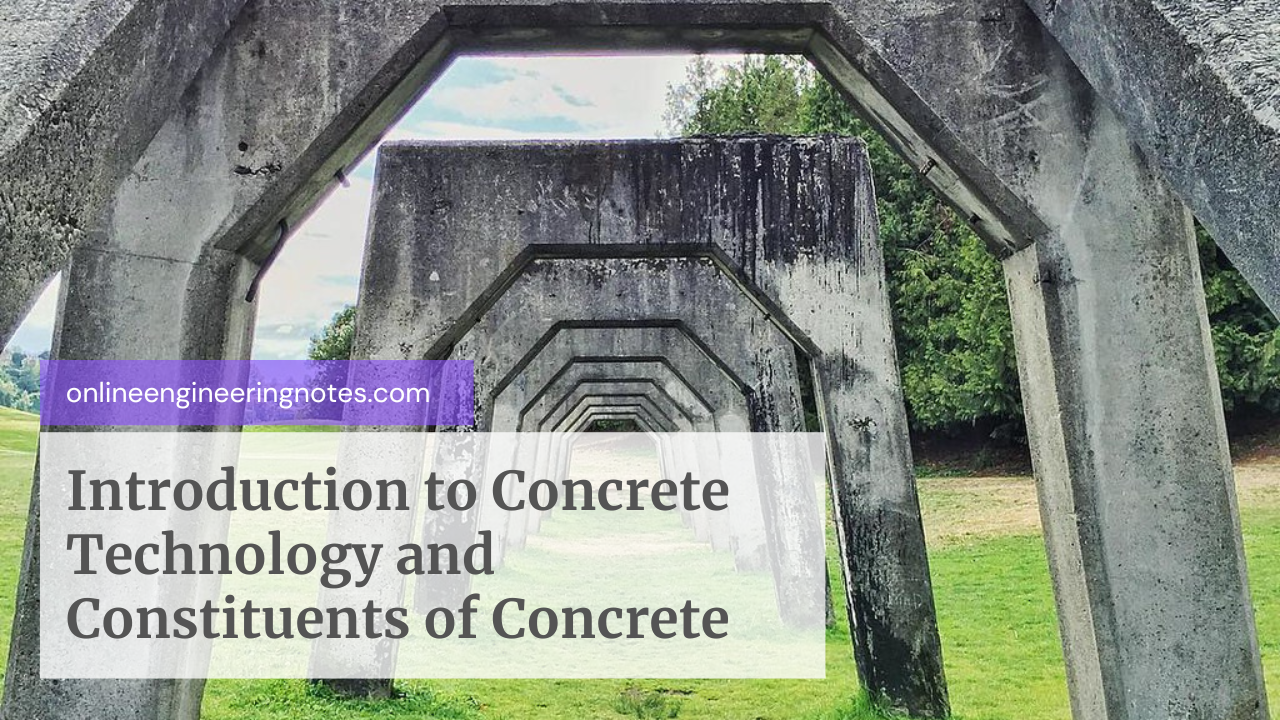1.1 Use of concrete in structure
Concrete:
- Composite mixture of binder, aggregate, water and sometimes admixture.
- Commonly used building material.
Merit:
- Ability to cast in any shape
- Economic
- Durable
- Fire and water resistant
- High strength
Demerit:
- Low tensile strength
- Low toughness
- Low curing time
Uses:
- Resistance to weather and fire resistant
- Strength increases with time
- Economical and energy efficient
- Durable
1.2 Constituent of concrete:
1. Coarse and Fine aggregate:
- Chemically inactive material i.e. inert material.
- Obtain from disintegration of strong rock. Example : gravel, pebble, sand etc.
- Contributes 70 to 80 % of volume of hardened concrete.
Properties of good aggregate:
- Must be clean, hard, strong, dense, durable, properly shaped, well graded.
- Inertness and soundness.
- High strength and toughness.
- High bond strength.
- Angular shape aggregate are good due to good interlocking.
2. Cement:
- Chemically active ingredient of concrete which shows binding properties after reaction with water.
- Manufactured by dry and wet process.
- Components used for making cement are:
i. Limestone, clay, chalk-lime (60%)
ii. Silica (20%)
iii. Aluminium (10%)
Iv. Others: Iron oxide, carbon dioxide etc.
Bougie compound:
Bougie compound are formed during hydration of cement.
| Compound | Formula | Symbol | % by mass in cement |
| 1. Tricalcium silicate | 3CaO.SiO2 | C3S | 20 – 50% |
| 2. Dicalcium silicate | 2CaO.SiO2 | C2S | 20 – 45% |
| 3. Tri- calcium aluminate | 3CaO.Al2O3 | C3A | 2 – 12% |
| 4. Tetra calcium alumino ferrite | 4Cao.Al2O3.Fe2O3 | C4AF | 6 – 12% |
1. Tricalcium silicate: Responsible for initial setting and early strength.
2. Dicalcium silicate: Provide good ultimate strength.
3. Tricalcium aluminate: First compound to react with water.
4. Tetra calcium aluminate ferrite: Poor cementing value and less active.
Types of cement:
- Ordinary Portland cement
- Portland pozzolana cement
- Rapid hardening cement
- White cement
- Colored cement
- Acid resistant cement
- Low heat cement
- Quick setting cement
Test of cement:
- Fineness
- Setting time
- Soundness
- Specific gravity
- Tensile strength
- Compressive strength
3. Admixture:
- A material other than basic ingredient like cement, aggregate and water which are used to alter the properties of concrete for specific purpose such as workability, w/c, setting time and strength can be changed.
- Added in powder or liquid form.
Purpose:
1. To modify fresh properties:
- Increasing the workability without changing water cement ratio.
(This process is also known as plasticizer.)
- Retard or accerate the intial setting time.
- Modify rate of bleeding.
2. To modify harden properties:
- Reduce the heat of evolution.
- Accelerate the rate of strength developed at early stage.
- Increase durability.
Types of admixture:
1. Chemical admixture:
- Material is form of powder or fluid that are added to concrete to give certain characteristics.
- Less than 5% added at the time of mixing.
- Accelerator: Increase rate of hydration.
- Retarder: Slow down rate of hydration.
- Entrapped air:

Air bubble are formed inside concrete unintentionally due to less compaction.
- Entrained air:

Air bubble is added intentionally to concrete to change the properties of concrete.
2. Mineral admixture:
- Very fine grain inorganic material which are added to concrete to improve properties of concrete.
- Needs large amount of volume compare to chemical admixture.
Use:
- Increase water tightness.
- Increase early strength.
- Increase workability.
- Decrease heat evolution.
References:
- Dayaratnam, P. Brick and reinforced brick structure.
- Neville, A.M. Properties of Concrete. England: Pearson Education Limited.
- Hendry, A.W., Sinha, B.P. & Davies, S.R. Design of Masonry Structure. London: E & FN Spon.

